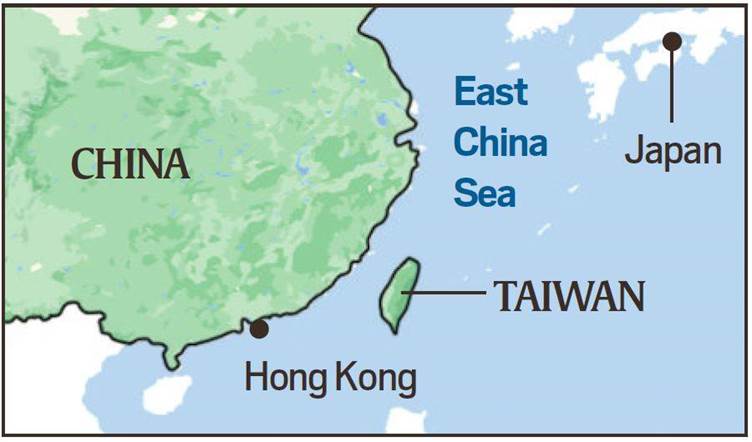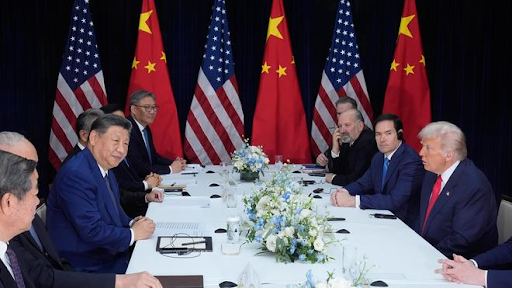Description

Copyright infringement is not intended
Context: As US House Speaker Nancy Pelosi arrived in Taiwan, upsetting China, India was keenly watching the developments, although it has not yet commented on it.
Details:
- India does not have formal diplomatic ties with Taiwan yet, as it follows the One-China policy.
- However, during then Chinese premier Wen Jiabao’s visit to India in December 2010, India did not mention support for the One-China policy in the joint communique.
- In 2014, when Prime Minister Narendra Modi came to power, he invited Taiwan’s Ambassador Chung-Kwang Tien, along with Lobsang Sangay, president of the Central Tibetan Administration to his swearing-in.
- While following the One-China policy, India has an office in Taipei for diplomatic functions — India-Taipei Association (ITA) is headed by a senior diplomat.
- Taiwan has the Taipei Economic and Cultural Center (TECC) in New Delhi. Both were established in 1995.
- Their ties focus on commerce, culture and education.
- Now in their third decade, these have been deliberately kept low-profile, owing to China’s sensitivities. For example, parliamentary delegation visits and legislature-level dialogues have stopped since 2017, around the time the India-China border standoff happened in Doklam.
- But, in recent years, India has tried to play up its relationship with Taiwan, as its ties with China have been strained. In 2020, after the Galwan clashes, New Delhi handpicked diplomat Gourangalal Das — then joint secretary (Americas) in the Ministry of External Affairs — to become its envoy in Taipei.
- On May 20 that year, the BJP asked two of its MPs, Meenakshi Lekhi and Rahul Kaswan, to attend the swearing-in ceremony of Taiwan President Tsai Ing-wen through virtual mode.
- In August 2020, condoling the death of former Taiwan President Lee Teng-hui, India described him as “Mr Democracy” — again perceived as a message to Beijing. New Delhi’s mission is otherwise extremely careful not to issue politically-loaded statements on Taiwan.
- .Taiwan’s current President Tsai Ing-wen is considered Lee’s protege.
- Any significant development in India-Taiwan relations runs the risk of meeting with a likely stern reaction from Beijing. This explains India’s steady, albeit slow, outreach to Taiwan.
- Given that India-China relations are not likely to witness a return to normalcy in the near future, India should consider adopting a bold, comprehensive and long-term approach to engage Taiwan.
- While there are compelling reasons for India and Taiwan to look towards each other, much of the relationship has been episodic, characterised by momentary highs. The relations have been suffering from divergent approaches, unrealistic expectations, and the resultant missed opportunities.
- The Tsai government is keen on expanding areas of cooperation with India as it is one of the priority countries for Taiwan’s New Southbound Policy.
- So far, it’s been largely an economic and people-to-people relationship. Now, amid the tension with China, New Delhi is paying attention to the need to advance India-Taiwan ties.
Recent tussle:
- Tensions between China and Taiwan have escalated since October 1, when China observes its National Day to mark the birth of the People’s Republic of China.
- Coinciding with the 72nd anniversary celebrations, China flew over 100 fighter jets into Taiwan’s air defence identification zone, jangling nerves in Taiwan and setting off alarm around the world that it was prepping to take over the island by force.

Background:
- Although largely unrecognised by other countries as such, self-ruled Taiwan sees itself as no less than an independent nation, and its leaders, including the fiercely pro-independence President Tsai Ing-wen, have vowed to defend its sovereignty against the Chinese goal of “reunification”.
- But Taiwan is entirely dependent on the US for its defence against possible Chinese aggression — and that is why every spike in military tensions between China and Taiwan injects more hostility in the already strained relationship between Washington and Beijing.
- Taiwan, earlier known as Formosa, a tiny island off the east coast of China, is where Chinese republicans of the Kuomintang government retreated after the 1949 victory of the communists — and it has since continued as the Republic of China (RoC).
- The island is located in the East China Sea, to the northeast of Hong Kong, north of the Philippines and south of South Korea, and southwest of Japan.
- What happens in and around Taiwan is of deep concern to all of East Asia.
- Taiwan observes October 10 — “double 10” — as its national day; it was on this day in 1911 that sections of the Manchu army rose in rebellion, leading ultimately to the overthrow of the Qing dynasty and the end of 4,000 years of the monarchy.
- The RoC was declared on December 29, 1911, and it found its feet in the 1920s under the leadership of Dr Sun Yat-sen, founder of the Kuomintang (KMT) Party.
- Sun was succeeded by General Chiang Kai-shek, whose actions against the Chinese communists, who were part of an alliance with the KMT, triggered the civil war that ended in victory for the communists and retreat of Chiang and the KMT to Taiwan.
- Since its founding in 1949, the PRC has believed that Taiwan must be reunified with the mainland, while the RoC has held out as an “independent” country.
- The RoC became the non-communist frontier against China during the Cold War, and was the only ‘China’ recognised at the UN until 1971. That was when the US inaugurated ties with China through the secret diplomacy of Henry Kissinger, national security adviser to President Richard Nixon.
- The US backs Taiwan’s independence, maintains ties with Taipei, and sells weapons to it — but officially subscribes to PRC’s “One China Policy”, which means there is only one legitimate Chinese government. Just 15, mostly very small, countries recognise Taiwan.
- Starting from the 1990s, and despite the missile crisis, relations between the PRC and RoC improved, and trade ties were established. As the British prepared to exit Hong Kong in 1999, the “One China, Two Systems” solution was offered to Taiwan as well, but it was rejected by the Taiwanese.
- In 2000, Taiwan got its first non-KMT government, when the Taiwanese nationalist Democratic Progressive Party (DPP) won the presidency.
- In 2004, China started drafting an anti-secession law aimed at Taiwan; trade and connectivity, however, continued to improve.
- The 2016 election of President Tsai marked the onset of a sharp pro-independence phase in Taiwan, and the current tensions with China coincided with her re-election in 2020.
- Taiwan now has massive economic interests, including investments in China, and pro-independence sections worry that this might come in the way of their goals. Inversely, the pro-reunification sections of the polity, as well as China, hope that economic dependence and increasing people-to-people contacts will wear out the pro-independence lobbies.
Challenge for the US:
- As tensions rise, the world is watching the US, whose status as the world’s pre-eminent power has been dented by the messy exit from Afghanistan.
- In East and Southeast Asia, several countries including Japan, South Korea, and the Philippines, which are sheltered under the protective umbrella of the US, are reading the tea leaves.
- President Joe Biden has so far walked a thin line between pledging support for Taiwan, and keeping the lid on tensions with Beijing.
- China and US had agreed to abide by the “Taiwan Agreement”, under which US support for the “One China Policy” is premised on Beijing not invading Taiwan.
- The AUKUS pact among the US, UK, and Australia, under which Australia will be supplied with nuclear submarines, has imparted a new dimension to the security dynamics of the Indo-Pacific. Taiwan has welcomed the pact, while China has denounced it as seriously undermining regional peace.
Implications for India:
- With India facing its own problems with China at the LAC, there have been suggestions that it should review its One China Policy — it has in any case long stopped reiterating this officially — and use not just the Tibet card, but also develop more robust relations with Taiwan to send a message to Beijing.
- India and Taiwan currently maintain “trade and cultural exchange” offices in each other’s capitals.
- In May 2020, the swearing-in of Tsai was attended virtually by MPs.
- In 2016, New Delhi had dropped plans to send two representatives for Tsai’s first inaugural at the last minute.
- Bloomberg has reported that talks with Taipei are ongoing to bring a $7.5-billion semiconductor or chip manufacturing plant to India.
https://indianexpress.com/article/explained/explained-global/india-one-china-stand-relations-with-taiwan-8066647/
1.png)









